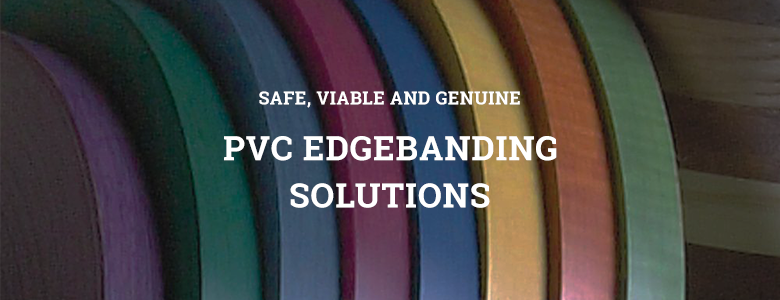Uncategorized
Safe, Viable and Genuine: PVC Edgebanding Solutions
Compared to conventional approaches to edgebanding, Poly-Vinyl Chloride or PVC edgebanding has become popular owing to its modern applications. PVC edgebanding is now used for most modular furniture in homes and offices and offers a number of advantages over traditional edgebanding forms using teakwood to cover raw edges. The characteristics of Poly Vinyl Chloride make it an ideal solution for edge banding in commercial furniture, along with other benefits like a seamless appearance.
Feasibility offered by PVC
Feasible characteristics like viscosity and feasibility make PVC edgebanding one of the cost-friendliest solutions available today. Despite a few environmental hazards and health risks associated with the disposal and burning of PVC after use, PVC edgebanding continues to be the most commonly used material for edgebanding. Properties of fire-resistance, strength, and durability are two primary reasons behind the common and popular use of PVC edgebanding. Spaces that are usually and excessively exposed to sunlight and UV can always benefit by PVC edgebanding as compared to Acrylonitrile Butadiene Styrene (ABS) or laser as PVC has higher resistance capacity.
PVC edgebanding can be done in thin strips whose thickness ranges between 0.3mm and 2.8 mm, and the width of PVC strips can be extended up to 610 mm. The thickness range of edgebanding strips is an outstanding feature of PVC, as compared to other forms of edgebanding like ABS. In a nutshell, while PVC shares similar properties to materials like ABS, there are quite a few things that make PVC and its effects different from others. The impermeable and flexible nature of PVC allows for great customization options and customers have a wider range of colours, textures, and shades to choose from. As opposed to wood bands for covering the edges of furniture, PVC is strong and capable of covering curved and rough surfaces with great ease.
Permeation properties of PVC
One of the main highlights PVC is its semi-permeable nature that restricts water and moisture permeation into wooden furniture. The popularity of PVC edgebanding also makes it easier to select from a wide range of colours and textures of PVC strips that can match the appearance of residential and commercial furniture. Synthetic properties of PVC also make it easier to manufacture and produce thin strips for edgebanding rough edges and can be effortlessly moulded according to specific edgebanding requirements. The amount of flexibility offered by the stretching abilities combined with the viscosity of PVC allows manufacturers to come up with edgebanding solutions that specifically cater to the needs of customers while keeping the texture and design of wooden furniture in mind.Feasibility offered by PVC
Feasible characteristics like viscosity and feasibility make PVC edgebanding one of the cost-friendliest solutions available today. Despite a few environmental hazards and health risks associated with the disposal and burning of PVC after use, PVC edgebanding continues to be the most commonly used material for edgebanding. Properties of fire-resistance, strength, and durability are two primary reasons behind the common and popular use of PVC edgebanding. Spaces that are usually and excessively exposed to sunlight and UV can always benefit by PVC edgebanding as compared to Acrylonitrile Butadiene Styrene (ABS) or laser as PVC has higher resistance capacity.
PVC is one of the most accessible and popular edgebanding options
Availability is never an issue with PVC. PVC edge bands are also easy to cut and apply, making them a popular option for commercial wooden furniture. However, one of the biggest mistakes that customers make is in choosing the right colour of edgebanding required. While PVC edge bands are a quick and modern solution to furniture today, common mistakes of misjudging the quality and/or colour of edge bands can limit the potential benefits of PVC to consumers.PVC edgebanding can be done in thin strips whose thickness ranges between 0.3mm and 2.8 mm, and the width of PVC strips can be extended up to 610 mm. The thickness range of edgebanding strips is an outstanding feature of PVC, as compared to other forms of edgebanding like ABS. In a nutshell, while PVC shares similar properties to materials like ABS, there are quite a few things that make PVC and its effects different from others. The impermeable and flexible nature of PVC allows for great customization options and customers have a wider range of colours, textures, and shades to choose from. As opposed to wood bands for covering the edges of furniture, PVC is strong and capable of covering curved and rough surfaces with great ease.
